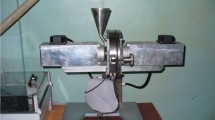The formulated problem of the raw-material base of non-ferrous metallurgy comprises the recovery of valuable components lost in concentration tailings by mechanochemical technology. The wastes of non-ferrous metallurgy sub-branches form exploitable resources, which, in addition to economic damage from incomplete metal extraction, cause environmental problems. The primary technologies for processing complex ores, which fail to provide waste-free concentration, cause an imbalance between raw material extraction and processing indicators since all the applied methods do not provide waste-free concentration processes. It is possible to increase the extraction of metals up to the background level by treating them with chemical reagent solutions at the time of formation of active mineral surfaces. There is also a tendency to involve metal leaching technologies in the exploitation of waste storages. The possibility of improving recovery rates during ore concentration provides a combination of traditional technologies with new technologies by supplementing the traditional technological chain with activator devices. The combination of traditional and new low-waste technologies will strengthen mineral safety through the rational use of the existing mineral resource base.

Similar content being viewed by others
References
N. G. Valiev, V. D. Propp, and A. M. Vandyshev, “Department of Mining Engineering of UGGU — 100 years, Izv. Vuzov. Gorny Zh, No. 8, 130–143 (2020).
V. I. Golik, Yu. I. Razorenov, V. N. Ignatov, and Z. M. Khasheva, “The history of Russian Caucasus ore deposit development,” The Social Sciences (Pakistan), 11, No. 15, 3742–3746 (2016).
D. I. Valiev, I. U. Ablakulov, and N. A. Abidova, “Features of sample preparation method by Richards–Chette formula in the study of representativeness and reliability of core sampling at Chukurkuduk deposit (Muntov ore field), Nauch. i Prakt. Issled., No. 2/4 (25), 4–7 (2020).
V. O. Konyshev, “On the method of determining the near-true gold content in ore bodies,” Otech. Geol., No. 2, 44–58 (2018).
V. I. Comashchenko, E. D. Vorobyov, and Yu. I. Razorenov, “To the concept of metal extraction at recycling waste ore enrichment,” Izv. Tomsk. Politehn. Univer. Inzhinir. Geores, 328, No. 10, 18–24 (2017).
S. V. Borshevsky, V. S. Morkun, L. Totev, Ch. Zhong, “Mining industry is the basis of sustainable development of RNO-Alania,” Ustojch. Razv. Gornyh Terr., 10, No. 1 (35), 109–116 (2018).
V. A. Chanturiya and V. A. Bocharov, “Modern state and main directions of development of technology of complex processing of mineral raw materials of non-ferrous metals,” Cvet. Metal., No. 11, 11–18 (2016).
V. I. Golik, “Extraction of metals from tailings by combined activation methods,” Obogash. Rud., No. 5, 38–40 (2010).
A. A. Horeshok, V. S. Solodov, A. V. Papin, A. V. Nevedrov, N. V. Martyushev, A. I. Karlina, and R. V. Klyuev, “Enrichment and processing of coke dust,” Coke and Chemistry, 65, No. 3, 98–101 (2022); DOI: https://doi.org/10.3103/S1068364X22030024.
T. G. Cherkasova, E. V. Cherkasova, A. V. Tikhomirova, N. V. Gilyazidinova, R. V. Klyuev, N. V. Martyushev, A. I. Karlina, and V. Y. Skiba, “Study of matrix and rare elements in ash and slag waste of a thermal power plant concerning the possibility of their extraction,” Metallurgist, 65, No. 11/12, 1324–1330 (2022); DOI: https://doi.org/10.1007/s11015-022-01278-2.
V. I. Golik, Y. I. Razorenov, and O. N. Polukhin, “Metal extraction from ore benefication codas by means of lixiviation in a disintegrator,” Intern. J. of Applied Engineering Research, 10, No. 17, 38105–38109 (2015).
V. I. Komashchenko, “Ecological and economic feasibility of recycling mining waste for the purpose of its processing,” Izv. Tul. Gos. Un-ta. Nauki o Zemle, No. 4, 23–30 (2015).
S. E. Gavrishev, S. N. Kornilov, I. A. Pytalev, and I. V. Gaponova, “Economic efficiency of mining enterprises by involving in the exploitation of man-made georesources,” Gorn. Zhur., No. 12, 46–51 (2017).
A. L. V. Cordano and R. P. Zevallos, “Country competitiveness and investment allocation in the mining industry: A survey of the literature and new empirical evidence,” Resources Policy, 73, 102136 (2022); DOI: https://doi.org/10.1016/j.resourpol.2021.102136.
M. Wach and I. Chomiak-Orsa, “The application of predictive analysis in decision-making processes on the example of mining company’s investment projects,” Procedia Computer Sci., 192, 5058–5066 (2021); DOI: 10.1016/j. procs.2021.09.284.
A. M. Freeman, J. A. Herriges, and C. L. Kling, The Measurement of Environmental and Resource Values: Theory and Methods, New York, USA, RFF Press (2014).
J. M. Harris and B. Roach, Environmental and Natural Resource Economics: A Contemporary Approach, New York, Armonk Inc. (2013).
M. L. C. M. Henckens, E. C. van Ierland, P. P. J. Driessen, and E. Worrell, “Mineral resources: Geological scarcity, market price trends, and future generations,” Resources Policy, 49, 102–111 (2016).
J. Chen, Sh. Wen, and Y. Liu, “Research on the efficiency of the mining industry in China from the perspective of time and space,” Resources Policy, 75, No. 102475 (2021); DOI: 10.1016/j. resourpol.2021.102475.
P. Oskarsson and K. Lahiri-Dutt, “India’s resource (inter) nationalism: Overseas mining investments shaped by domestic conditions,” The Extractive Industries and Society, 6, No. 3, 747–755 (2018); DOI: https://doi.org/10.1016/j.exis.2018.11.006.
Author information
Authors and Affiliations
Corresponding author
Additional information
Translated from Metallurg, Vol. 67, No. 1, pp. 92–97, January, 2023. Russian DOI: https://doi.org/10.52351/00260827_2023_0_92.
Rights and permissions
Springer Nature or its licensor (e.g. a society or other partner) holds exclusive rights to this article under a publishing agreement with the author(s) or other rightsholder(s); author self-archiving of the accepted manuscript version of this article is solely governed by the terms of such publishing agreement and applicable law.
About this article
Cite this article
Golik, V.I., Klyuev, R.V., Martyushev, N.V. et al. Prospects for Return of Valuable Components Lost in Tailings of Light Metals Ore Processing. Metallurgist 67, 96–103 (2023). https://doi.org/10.1007/s11015-023-01493-5
Received:
Revised:
Accepted:
Published:
Issue Date:
DOI: https://doi.org/10.1007/s11015-023-01493-5




